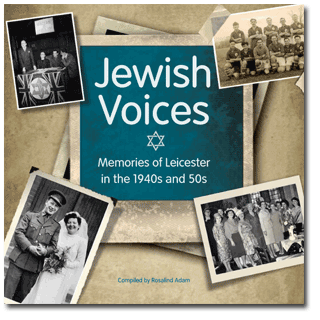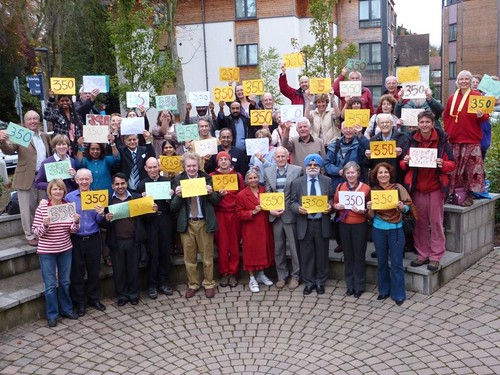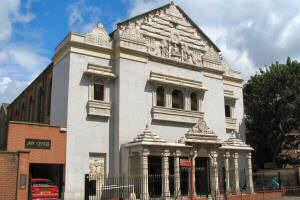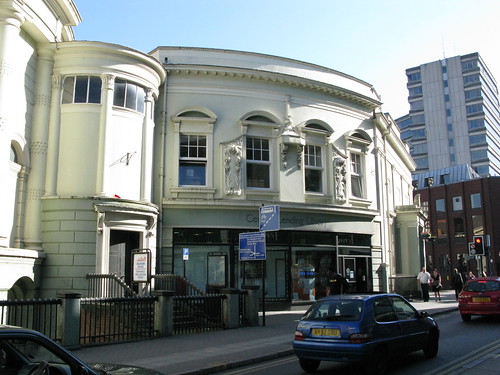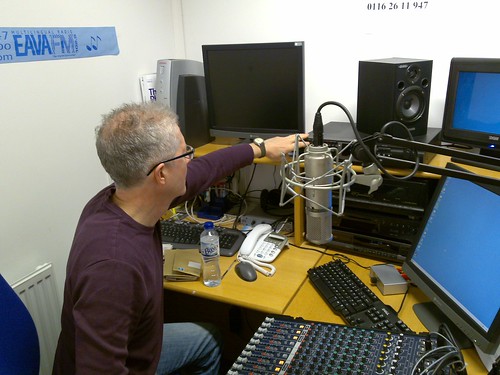Like the Faiths Trail coach tour round some of the city's places of worship (see number 5 in this list of my top ten for 2009), Holocaust Memorial Day has become one of the signature events organised each year by Leicester Council of Faiths. This local commemoration of Holocaust Memorial Day is arranged in association with the Schools Development Support Agency, the Stanley Burton Centre for Holocaust and Genocide Studies at the University of Leicester and Leicester City Council).
The theme for Holocaust Memorial Day this year was Stand Up to Hatred. There was a three-member panel: Dr Martin Stern, a member of the Leicester Hebrew Congregation who had been taken into a Nazi concentration camp at the age of five (along with his one-year old sister) and whose story had been published in the Leicester Mercury over the previous week; a lady from the British Traveller community, who wished to be known by her first name only (Lil); and Suleman Nagdi, founder member of the Muslim Burial Council of Leicestershire (MBCOL) and Public Relations Officer for the Federation of Muslim Organisations (FMO) - an infrastructure support body that works with more than 750 Muslim groups in the city and county.
The Muslim Council of Britain had advised Muslims throughout the country to abstain from supporting National Holocaust Memorial day this year as a way of registering their protest at the situation in Gaza. I can't say whether this was universally observed all over Britain. I can say that in light of this national advice, the FMO held an urgent meeting and voted that they should support the events in Leicester and Leicestershire. Abdul Kareem Gheewala, Chair of the FMO, was in attendance at this commemoration of HMD. Suleman Nagdi was asked to speak on the panel at Fraser Noble Hall at just half an hour's notice. I'm not going to try and report or paraphrase what Suleman said when he got the chance to speak. If it's a failure on the writer's part to say, "You had to be there" then on this occasion I'll happily hold my hands up and say, okay, I fail - this time. Usually I take copious notes at such events, but my Moleskine notebook stayed shut on this occasion. Anyone reading this will be aware that Leicester likes to think of itself as somewhere special, somewhere exceptional. It's at moments like this that I believe it.
I asked some of the folk I know from Network for Change to come with me to this event. People whom we'd now describe as having mental health problems were also taken to the camps - and Holocaust Memorial Day commemorates all those who have been (or still are) victims of persecution.
It's a guiding principle of Leicester Council of Faiths that it tends to the religious, spiritual and cultural life of the city. While it expresses sympathy with those who are suffering around the world, for whatever reason and from whatever cause, it doesn't take sides. This evening was a magnificent display of solidarity among the city's faith communities. I'm sure that Suleman would have received a standing ovation at the end of his impromptu speech - were it not for the fact that many of those attending were probably a bit too old and frail to stand.
Read my blog entries for Holocaust Memorial Day 2010, "The Legacy of Hope" and Holocaust Memorial Day 2011, "Untold Stories".

